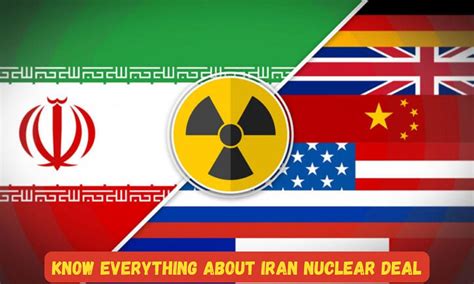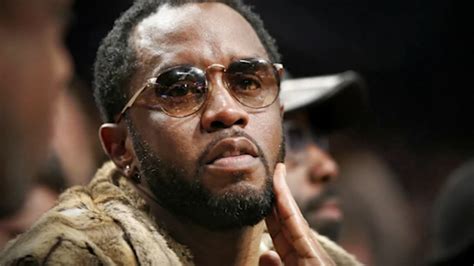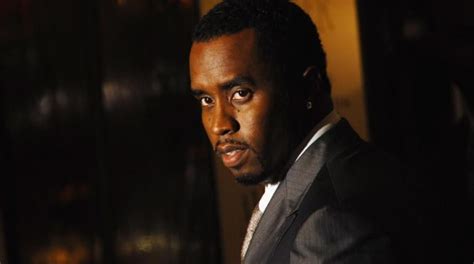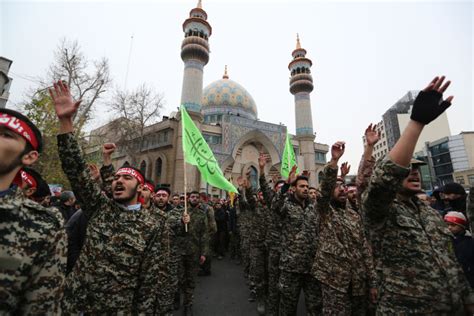
Iran’s Supreme Leader Ayatollah Ali Khamenei faces an increasingly stark choice: revive the 2015 nuclear deal and potentially alleviate crippling economic sanctions, or risk further economic deterioration and possible social unrest amid growing internal dissent and external pressure.
Ayatollah Ali Khamenei, Iran’s Supreme Leader, finds himself at a critical juncture, grappling with a complex dilemma that could define the future of the Islamic Republic. As the nation teeters on the brink of economic collapse, Khamenei must decide whether to revive the 2015 nuclear deal, formally known as the Joint Comprehensive Plan of Action (JCPOA), and potentially unlock billions of dollars in frozen assets and ease crippling sanctions, or continue down the current path, risking further economic hardship and potential social upheaval. The stakes are high, and the decision carries profound implications for Iran’s domestic stability, regional influence, and international relations.
According to the Yahoo News report, the situation inside Iran is becoming increasingly dire. The Iranian economy has been struggling for years under the weight of U.S. sanctions reimposed by the Trump administration after Washington unilaterally withdrew from the JCPOA in 2018. These sanctions have targeted Iran’s oil exports, banking sector, and access to international financial markets, severely restricting the country’s ability to generate revenue and conduct trade. As a result, Iran has experienced significant economic contraction, high inflation, rising unemployment, and a decline in living standards.
The economic crisis has fueled widespread discontent among the Iranian population. Protests have erupted in recent years over issues such as rising prices, corruption, and lack of economic opportunity. While the government has managed to suppress these protests through force and intimidation, the underlying grievances remain, and there is a growing risk that further economic deterioration could trigger more widespread unrest.
“The people are suffering,” said one Iranian economist who spoke on condition of anonymity, fearing reprisal from the government. “They see the wealth of the country being squandered on ideological projects and foreign adventures, while they struggle to put food on the table.”
The Biden administration has expressed a willingness to revive the JCPOA, but negotiations between Iran and the United States have stalled over several key issues. One major sticking point is Iran’s demand for guarantees that future U.S. administrations will not withdraw from the deal again. Washington has been reluctant to provide such guarantees, arguing that it cannot bind the hands of future presidents.
Another obstacle is the issue of sanctions relief. Iran wants all sanctions imposed by the Trump administration to be lifted, including those that are not directly related to the nuclear program. The United States has insisted that it will only lift sanctions that are inconsistent with the JCPOA.
Despite these challenges, there is still a window of opportunity to revive the nuclear deal. Both Iran and the United States have an interest in avoiding a further escalation of tensions in the region. A revived JCPOA would not only provide Iran with economic relief but also limit its nuclear program, reducing the risk of a nuclear arms race in the Middle East.
However, time is running out. As Iran continues to advance its nuclear program, the value of the JCPOA diminishes. If the deal is not revived soon, it may become irrelevant, and the world could face the prospect of a nuclear-armed Iran.
The decision ultimately rests with Ayatollah Khamenei. He must weigh the potential benefits of reviving the JCPOA against the risks of continuing down the current path. His decision will have far-reaching consequences for Iran, the region, and the world.
The Internal Pressure
The internal pressures on Ayatollah Khamenei are multifaceted and intense. The economic hardship experienced by ordinary Iranians is a significant source of discontent. The rial, Iran’s currency, has plummeted in value, making imports more expensive and eroding the purchasing power of ordinary citizens. Inflation remains stubbornly high, and unemployment is a persistent problem, particularly among young people.
Moreover, there is a growing sense of frustration with the government’s handling of the economy. Many Iranians believe that corruption and mismanagement are rampant and that the country’s resources are being wasted on ideological projects and foreign interventions. This perception has fueled anger and resentment, leading to protests and calls for change.
The protests that have erupted in recent years have been met with a harsh response from the government. Security forces have used force to disperse demonstrations, and many protesters have been arrested and imprisoned. However, the government’s heavy-handed tactics have not quelled the underlying discontent.
Furthermore, there are divisions within the Iranian political establishment over the nuclear deal. While some officials support reviving the JCPOA, others are opposed, arguing that it would be a sign of weakness and that Iran should not compromise with the United States. These divisions make it more difficult for Khamenei to reach a decision.
The External Pressure
In addition to the internal pressures, Ayatollah Khamenei is also facing significant external pressure. The United States and its allies have been ratcheting up the pressure on Iran in recent years, imposing sanctions and taking other measures to isolate the country.
The Trump administration’s withdrawal from the JCPOA in 2018 and its subsequent reimposition of sanctions dealt a severe blow to the Iranian economy. The sanctions have targeted Iran’s oil exports, which are the country’s main source of revenue, as well as its banking sector and access to international financial markets.
The Biden administration has maintained most of the sanctions imposed by the Trump administration, although it has expressed a willingness to revive the JCPOA. However, negotiations between Iran and the United States have stalled over several key issues, and it is unclear whether a deal can be reached.
In addition to the U.S. sanctions, Iran is also facing pressure from its regional rivals, such as Saudi Arabia and Israel. These countries view Iran as a threat to their security and have been working to contain its influence in the region.
Saudi Arabia has been engaged in a proxy war with Iran in Yemen, where the two countries support opposing sides in the conflict. Israel has carried out numerous airstrikes against Iranian targets in Syria and has vowed to prevent Iran from developing nuclear weapons.
The Nuclear Program
Iran’s nuclear program is a major source of concern for the international community. Iran insists that its nuclear program is for peaceful purposes, such as generating electricity and producing medical isotopes. However, Western powers suspect that Iran is secretly seeking to develop nuclear weapons.
The JCPOA, which was signed in 2015, was designed to prevent Iran from developing nuclear weapons. Under the terms of the agreement, Iran agreed to limit its nuclear program in exchange for the lifting of sanctions.
However, after the United States withdrew from the JCPOA in 2018, Iran began to gradually roll back its commitments under the agreement. Iran has increased its stockpile of enriched uranium, has begun enriching uranium to higher levels of purity, and has resumed research and development activities on advanced centrifuges.
These actions have raised concerns that Iran is getting closer to developing nuclear weapons. If Iran were to acquire nuclear weapons, it would have profound implications for the region and the world. It could trigger a nuclear arms race in the Middle East and increase the risk of a nuclear conflict.
The Potential Scenarios
Given the complex array of internal and external pressures, there are several possible scenarios for Iran’s future.
Scenario 1: Revival of the JCPOA
In this scenario, Iran and the United States reach an agreement to revive the JCPOA. Under the terms of the agreement, Iran would agree to limit its nuclear program in exchange for the lifting of sanctions. This would provide Iran with much-needed economic relief and could help to stabilize the country.
However, even if the JCPOA is revived, it is not clear that it would solve all of Iran’s problems. The Iranian economy is deeply troubled, and it could take years to recover from the damage caused by the sanctions. Moreover, there is no guarantee that the United States will not withdraw from the deal again in the future.
Scenario 2: Continued Economic Deterioration
In this scenario, Iran and the United States fail to reach an agreement to revive the JCPOA, and the country’s economic situation continues to deteriorate. This could lead to more widespread social unrest and could even threaten the stability of the Iranian regime.
If the Iranian economy collapses, it could have serious consequences for the region. It could lead to an influx of refugees into neighboring countries and could create opportunities for extremist groups to exploit the situation.
Scenario 3: Iranian Nuclear Breakout
In this scenario, Iran decides to abandon the JCPOA altogether and pursue the development of nuclear weapons. This would be a highly dangerous development that could trigger a military response from Israel or the United States.
If Iran were to acquire nuclear weapons, it would have profound implications for the region and the world. It could trigger a nuclear arms race in the Middle East and increase the risk of a nuclear conflict.
Scenario 4: A New Interim Agreement
Recognizing the difficulties in fully reviving the JCPOA, Iran and the U.S. might pursue a limited, interim agreement. This could involve Iran halting further enrichment activities in exchange for limited sanctions relief, such as access to some frozen assets. This scenario could buy time for further negotiations and de-escalate tensions, but it would not resolve the underlying issues.
Scenario 5: Regime Change
While less likely in the short term, continued economic hardship and social unrest could eventually lead to regime change in Iran. This could occur through a popular uprising or a military coup. However, regime change in Iran would be a highly destabilizing event with unpredictable consequences for the region.
The Role of Ayatollah Khamenei
Ultimately, the decision on which path to take rests with Ayatollah Khamenei. He is the supreme leader of Iran and has the final say on all major policy decisions.
Khamenei is a deeply conservative figure who is suspicious of the West. He has been a strong critic of the United States and has accused Washington of trying to undermine the Iranian regime.
However, Khamenei is also a pragmatic leader who is aware of the challenges facing Iran. He knows that the country is in a difficult economic situation and that something needs to be done to address it.
It is unclear what Khamenei will decide to do. He may conclude that reviving the JCPOA is the best way to save the Iranian economy. Or he may decide that the risks of compromising with the United States are too great and that Iran should continue down the current path.
Whatever Khamenei decides, his decision will have far-reaching consequences for Iran, the region, and the world.
FAQ: Iran’s Nuclear Situation and Economic Challenges
1. What is the JCPOA and why is it important?
The Joint Comprehensive Plan of Action (JCPOA), also known as the Iran nuclear deal, is an agreement reached in 2015 between Iran and the P5+1 (the five permanent members of the United Nations Security Council – China, France, Russia, the United Kingdom, and the United States – plus Germany) and the European Union. Under the agreement, Iran agreed to limit its nuclear program in exchange for the lifting of economic sanctions. The JCPOA is important because it aimed to prevent Iran from developing nuclear weapons and to reduce tensions in the Middle East. The Yahoo News report refers to the possible revival of the deal as a potential pathway to economic relief for Iran.
2. Why did the United States withdraw from the JCPOA?
In 2018, the United States, under the Trump administration, unilaterally withdrew from the JCPOA. The Trump administration argued that the deal was flawed and did not adequately address Iran’s nuclear program or its other malign activities in the region, such as its support for terrorist groups and its ballistic missile program. The withdrawal led to the reimposition of sanctions on Iran, which has severely damaged the Iranian economy.
3. What are the main obstacles to reviving the JCPOA?
Several obstacles stand in the way of reviving the JCPOA. One major sticking point is Iran’s demand for guarantees that future U.S. administrations will not withdraw from the deal again. The United States has been reluctant to provide such guarantees, arguing that it cannot bind the hands of future presidents. Another obstacle is the issue of sanctions relief. Iran wants all sanctions imposed by the Trump administration to be lifted, including those that are not directly related to the nuclear program. The United States has insisted that it will only lift sanctions that are inconsistent with the JCPOA. Mistrust between the two countries remains a significant hurdle.
4. What are the potential consequences of Iran not reviving the JCPOA?
If the JCPOA is not revived, Iran could continue to advance its nuclear program, potentially leading to the development of nuclear weapons. This would have serious consequences for the region and the world, potentially triggering a nuclear arms race in the Middle East and increasing the risk of a military conflict. The Yahoo News article highlights that Iran also faces the prospect of further economic deterioration and social unrest if the deal is not revived.
5. What is the current state of Iran’s economy?
Iran’s economy is currently in a precarious state, largely due to the impact of U.S. sanctions. The rial, Iran’s currency, has plummeted in value, inflation is high, and unemployment is a persistent problem. The country’s oil exports, which are a major source of revenue, have been severely curtailed. The Yahoo News article emphasizes the internal discontent stemming from these economic hardships and the pressure they place on the Iranian leadership.









